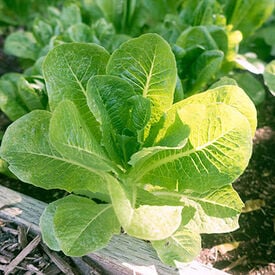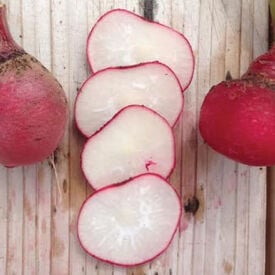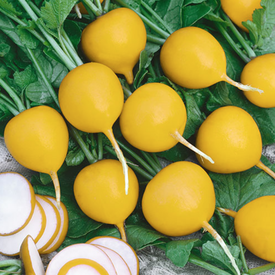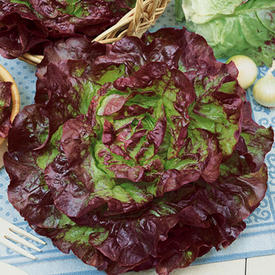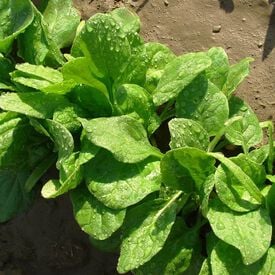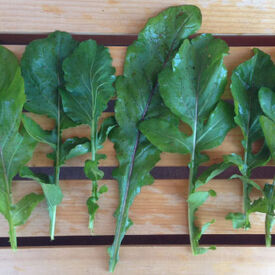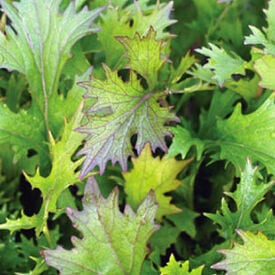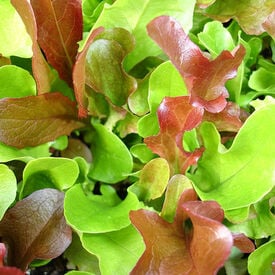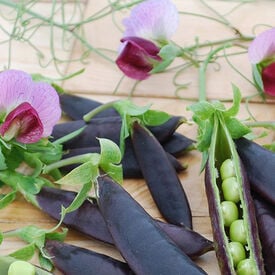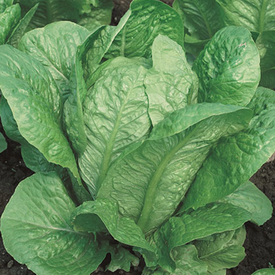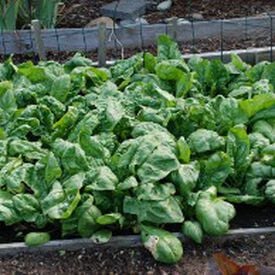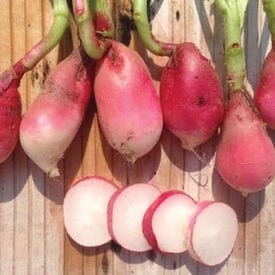The Little Caesar Lettuce is a very attractive tall romaine type with crisp, bright green outer leaves and golden-blanched inner leaves. This lettuce has a sweet, crunchy flavor that is delicious on any sandwich or salad. This variety is easy to grow and is perfect for smaller gardens. Little Caesar is best picked right before eating.
The Cherry Belle Radish is the earliest maturing, garden standard radish. This variety is a 1949 All-American Winner and there is no wonder why. This radish retains its fine eating quality all season. The Cherry Belle is a round, smooth, scarlet beauty. This radish is 3/4" inches across with a crisp, white flesh that is ideal for garnishes or use in salads.
The Golden Helios Radish is named after the Greek god of the sun. This olive-shaped radish is bright yellow with a crispy white flesh and is truly one of the most beautiful radish! Not only is Helios a beauty, it is also tasty with a sweet and mild flavor.
Carmona Red is a favorite among many market growers! This lettuce variety produces big, bright red heads with lime green hearts. The Carmona Red has a nice silky texture and is very disease resistance.
The Viroflay Spinach is a gourmet French heirloom that was developed prior to 1866. The big, smooth leaves of this Spinach variety is a deep green color and grows up to 10 inches long. This very fast growing plant is popular for fall planting.
Roquette Arugula seeds produce a fast-growing, cool-season leafy green prized for its peppery, nutty flavor and tender, deeply lobed leaves. Also known as salad rocket, this Mediterranean native has been cultivated since ancient Roman times for both its culinary and medicinal qualities. Roquette arugula thrives in full sun to partial shade and prefers well-drained, fertile soil, reaching harvest size in as little as 30–40 days. Ideal for salads, sandwiches, or as a garnish, its bold flavor intensifies as the plant matures. Regular harvesting encourages new growth, making it a favorite for continuous garden production throughout spring and fall.
The Mizuna Purple Mustard produces bright purple tinged and sharply serrated green leaves. This is a tasty variety that is fast maturing and slow bolting.
The Garden Mesclun Blend is a mixture of light green to emerald, and bronze to deep red lettuces as well as endive and radicchio for a crunchy, zesty flavor that is a perfect addition to any salad!
The Sugar Magnolia Pea is a beautiful deep purple colored sugar snap pea that is the result of over 15 years of development! This spectacular beauty has a very sweet flavor and is best before the pods get too fat. Make sure that this climbing variety has a trellis, as its sturdy vines reach to be 6-7 feet tall. Add the Sugar Magnolia to fresh salads or as a steamed side dish for a pop of color!
The Vivian lettuce is a tightly bunched romaine with broad dark green crisp leaves. Its leaves are 12-16 in. long and 4-6 in. across. Vivian is bolt resistant and suitable for commercial and home growers. Its erect dark green leaves are great for baby leaf production.
The Olympia is a top-notch smooth leaf hybrid spinach that has a great flavor. This spinach Hybrid has thick and dark green leaves that grow upright. The Olympia is highly recommended for spring, summer, fall and over wintering crops because it resists bolting under high temperatures and long day conditions. Treated seed.
The French Breakfast Radish has a delicate flavor and is an excellent variety for home gardens. This radish variety is an attractive uniquely shaped radish with elongated roots and red tops with white tips. The French Breakfast has an excellent flavor and texture, that is perfect for dips or as a garnish.
